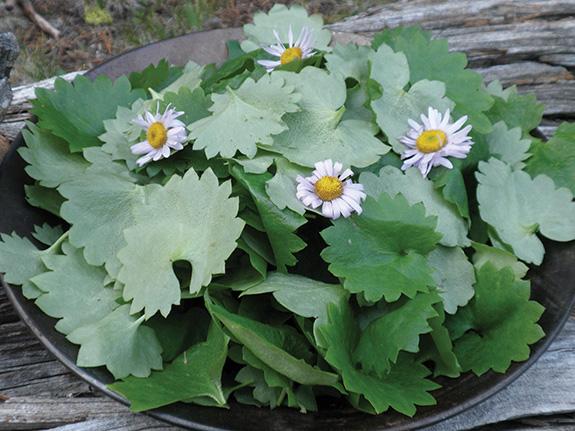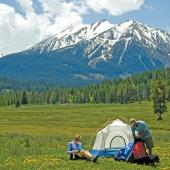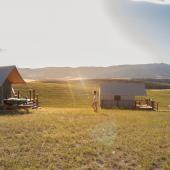Free Lunch
Foraging with a purpose.
Want to become more self-reliant in the wilderness? Intentionally under-packing the food supply to self-impose a “forced foraging” situation can stimulate hunting and foraging skills. The trick is to find the balance, creating a deficit in the food supply without completely starving. I’ve experienced both. Bring too much food, and there is no need to hunt or gather anything. Try camping with too little food, and hunger quickly leads to laziness or retreat. For short outings, the calculations are straightforward.
Going for an afternoon hike? Bring salad dressing.
Wild greens are abundant in summer, and it isn’t difficult to pick a salad. In the mountains, look for brook saxifrage growing along small streams. The round leaves are triangularly serrated, as if trimmed with pinking shears. Brook saxifrage is an excellent mild-flavored bulk ingredient. Add a sprinkling of wildflowers for beauty and flavor, such as glacier lilies, shooting stars, blue violets, or asters. No brook saxifrage available? Try a blend of dandelion leaves, clover, and wild strawberry leaves. Either way, the salad provides the bulk food, while the dressing contributes a familiar western sweet or salty, oily or creamy flavor, plus a few calories. I eat far more wild salad with dressing than without.
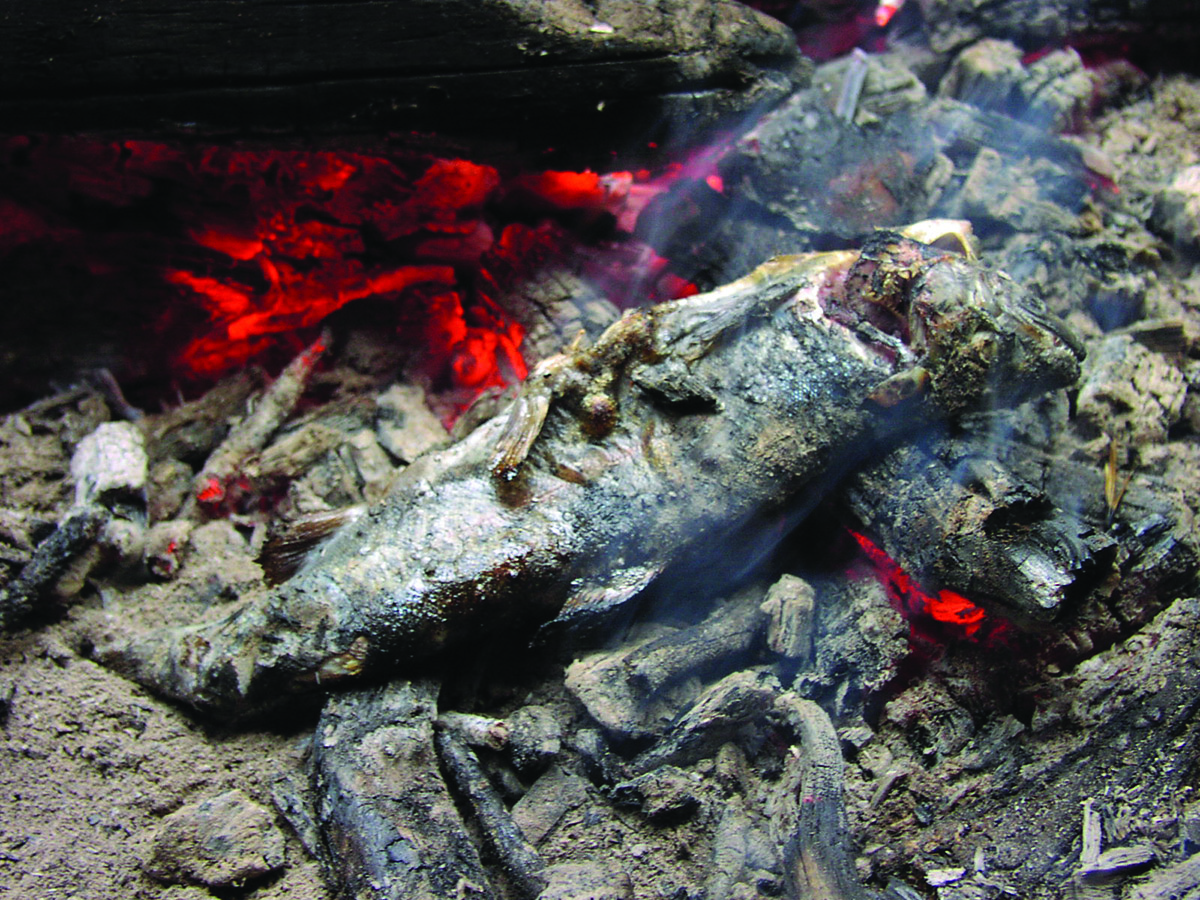
Planning for the whole day? Add fishing line and flour.
Dig up a few worms in moist mountain soil and try fishing small streams or lakes. If need be, fish can be caught relatively easily by hand in shallow waters entering or exiting mountain lakes during the spawning run in late June. However, it isn’t actually legal to catch fish by hand, and it is better to allow them to spawn if you are not in dire need. Bring a hook, worm, and license to catch a free meal. There’s no need for a pan. Gut the catch and lay it on hot coals to cook. Brush the charcoal off the cooked fish and chow down. For extra nutrition, toast the leftover fish bones for a crunchy snack.
As for the flour, that’s a conveniently inconvenient source of calories and insurance, like an energy bar with some assembly required. Mix flour and a little water with a stick to make a dry, non-sticky dough. Pat it thin and cook it on the hot coals to make an “ashcake.” Blow off the ashes and hot coals for a delicious campfire biscuit. Add a wild salad, and you’ve got a three-course dinner. Ashcakes are a good complement to any wilderness meal and good insurance in case fishing doesn’t pan out.
Headed out overnight? Test your aim.
In the span of human history, sticks and rocks were more essential to bring home the proverbial bacon than more complicated weapons like bows and arrows. In the right hands, a rock can be deadly, yet it does require consistent practice. On one outing, three of us threw a hundred rocks apiece at a squirrel in a tree without ever hitting it. Yet, the conditioning paid off the next morning when I killed a squirrel with my first throw.
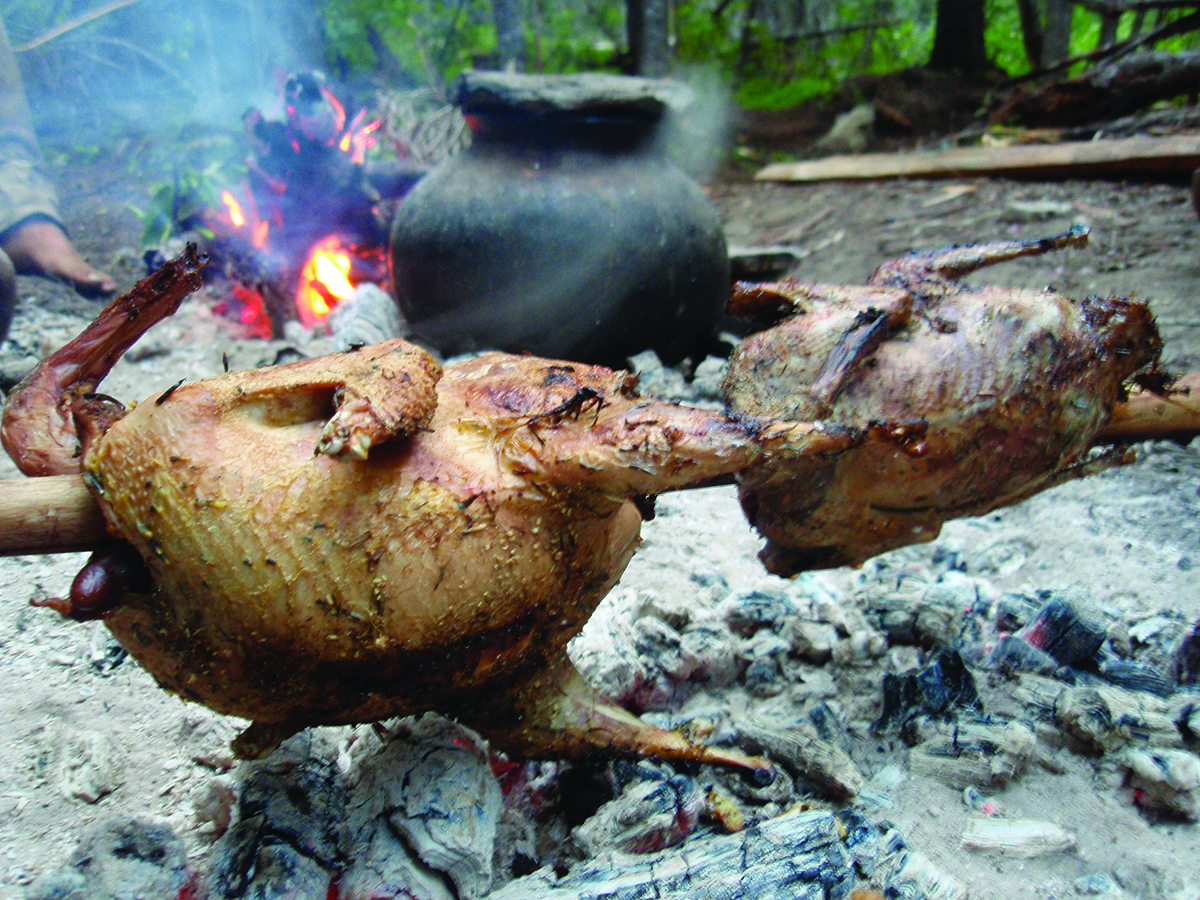
I don’t advocate terrorizing wildlife at every turn in the trail. However, unleashing the primal self to hunt by wits and hands is both fulfilling and instructive to cultivate a deeper appreciation of wildlife and our historical connection with the natural world.
Thomas J. Elpel is the director of Green University in Pony and the author of Participating in Nature and Foraging the Mountain West. His Art of Nothing Wilderness Survival video series showcases hand-to-mouth wilderness survival adventures in southwest Montana.

